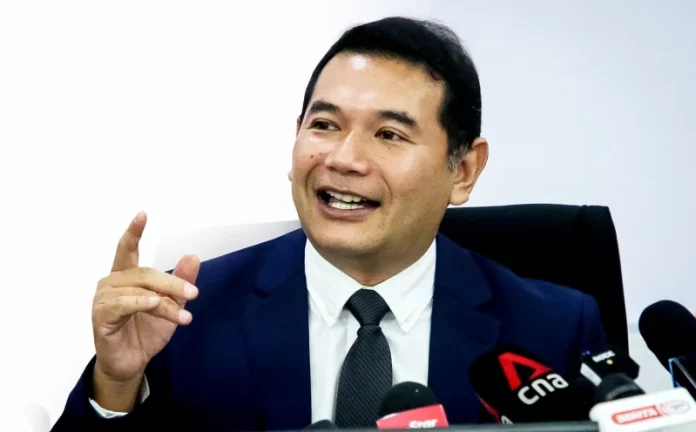Consumer spending habit is the main driver of inflation, according to Economy Minister Rafizi Ramli. He said that, according to economic theory, when prices go up, demand should go down; but this is not the case in Malaysia. During a speech last week, he argued that “Demand has not gone down despite rising prices, particularly in the foods and non-alcoholic beverages category, which is also the main driver of a consumer price index (CPI)”.
The Center for Market Education (CME) observes that this type of communication is not precise; «while we understand the aim of “shaking” consumers with these statements, we also believe that the ministry could send out strong messages without compromising on the accuracy of economic reasoning», said Dr. Carmelo Ferlito, CEO of the Center for Market Education.
The research centre intends to clarify that inflation’s “original and proper meaning is an excessive increase in the quantity of money, leading in turn to an increase in prices” (F.A. von Hayek); therefore, we may say that inflation is produced by “a more rapid increase in the quantity of money than in the quantity of goods and services available for purchase, and such an increase raises prices in terms of that money” (M. Friedman).
This is precisely what happened in 2020 and 2021 “thanks” to expansive fiscal and monetary policies, aiming at addressing the wounds produced by lockdowns. It has been estimated that the total value of the so-called relief packages reached RM 305 billion in 2020 (23% of GDP) in 2020 and RM 225 billion (15% of GDP) in 2021.
In 2020 and 2021, the monetary aggregates M1, M2, and M3 recorded an average yearly growth of 13.07%, 5.38%, and 5.23% respectively, while GDP recorded an average decline of ‑1.92%, CPI rose 0.92%, and PPI rose 3.92%. The full impact of monetary expansion cannot be fully seen in CPI behaviour because the economic crisis brought in deflationary pressures: the 0.92% average is the result of competing for inflationary and deflationary pressures. At the producer price level, instead, the increase is higher not only because of supply-side shocks, but because production prices anticipate what happens at the consumption level.
Taking the economic performance of 2019 as a base (=100), in 2021 GDP was still equal to 97.33, which would call for deflation in order to incentivize savings and allow for the restructuring of the production structure. Instead, M1 actually hit 127.78, CPI went to 101.8, and PPI rose to 107.64.
In 2021, private consumption rose by 1.9%, while government consumption grew by 6.6%. In a nutshell: consumer spending did not contribute to inflationary pressures per se, but as a consequence of fiscal expansion, which is then the true root of current inflationary issues.
While we tend to agree that Malaysians may have bad consumption habits and this is testified by the high level of household debt over GDP – the highest in Asia – we must observe that this was already the case before the pandemic and it cannot be addressed, as the ministry suggested, buy “changing elasticity”; the government cannot control or interfere with elasticity, but at best it can incentivize initiatives that promote financial literacy for better spending decisions.
In the considerations about quantity demanded not responding to price increases, YB Rafizi Ramli does not take into account the concept of elasticity: When the price of a good increase, individuals and businesses will buy less. But how much less? A lot or a little? The elasticity of demand measures how responsive the quantity demanded is to a change in price—the more responsive quantity demanded is to a change in the price, the more elastic is the demand curve. The Minister of Economy mentioned the case of food, ignoring that the elasticity of demand tends to be low (minimal reaction of the quantity demanded in front of price changes) for goods that are necessities and with fewer substitutes, in particular in the short-run (adjusting consumption habit takes time).
To properly tackle inflation, CME suggests the following policy measures:
- Allow productivity growth deflation by nurturing an environment conducive to innovation;
- Allow cash-building deflation, as savings are the necessary means for enhancing a process of sound growth;
- Gradually reduce government spending to reduce the quantity of money in circulation;
- Reforms should be introduced to reinstate the primacy of balanced budgets.
If the government wishes to be serious about tackling inflation, it should first be able to properly recognize its cause and implement an adequate communication policy. A U-turn in fiscal policy is the most important factor. Restoring savings is important but this cannot be done with impossible policies such as “changing elasticity”; rather, financial literacy should be promoted.
Furthermore, if the government wants the people to be responsible with their finances, it should send a signal by being responsible with its own finances, which are indeed made up of money collected from the people via taxation», concluded Dr Ferlito.
By Dr Ferlito of CME









